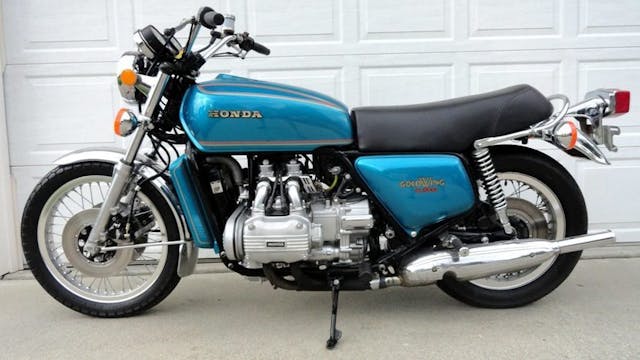5 winter motorcycle projects to start thinking about now
Summer is prime time to sell off some of the junk in your garage. Or basement. That way, when winter arrives you can buy a project motorcycle or three (it happens) to store in that newfound space. We don’t all have heated garages, but rolling a two-wheeled machine right into your basement puts everyone on a level playing field. Let’s look at what options are out there now, so you can spend the dark months ahead working instead of shopping.
1965–68 BSA A65 Lightning

Average #4-condition (Fair) value: $4500
British motorcycles are in a league of their own when it comes to looks and image (Steve McQueen still holds some sway, after all). There’s a reason British bikes even in project condition still sell for a lot, and many buyers seek them out simply for the opportunity to rebuild them. Full-size British bikes will take more work in plating, polishing, and tinkering to get just right than, say, a simple Honda CB350 will, and the entry point might be prohibitive for many. However, the joy of participating in a rich tradition of English motorcycle maintenance can’t be beaten. BSA, Triumph, or Norton will all present similar experiences in this regard, but we chose the BSA for this list because of its lower entry point. A true project can be had for $3000, but prices go up quickly from there.
1969–75 Suzuki TS250

Average #4-condition (Fair) value: $1500
Slightly less common than the Yamaha and Honda variants of the day, the Suzuki TS250 is a great option if your focus is usability and utility. Especially if your buddy with a Hodaka wants to race. At around $1000 for a true project, the entry point is accessible. Two-strokes are inherently easier to rebuild than a four-stroke, and with parts readily available for most of the Japanese enduros, your winter won’t be spent hunting for parts. They’re also built to take a beating, and many survivors have already endured such treatment. You’ll likely be doing more bodywork and cosmetic repair than mechanical work on these unless you get lucky with the prior owners whose kids never got the bike bug.
1973–75 Hodaka 125 Wombat

Average #4-condition (Fair) value: $1600
You don’t need a big engine to have fun, and if you are a summertime camper or spend time in the woods then the Hodaka Wombat (or any other of its incredibly named models—think “Road Toad”) is your ticket. Hodaka only lasted through the ’60s and ’70s but has one of the most loyal and nostalgic followings among bike enthusiasts today.
The smaller, single-cylinder engine means fewer parts to buy (often at a lower cost) and a powerplant that can be removed with four bolts and two hands. Hodakas are harder to find than more mainstream bikes of the era but there are enough parts sources out there to get by. Nice ones have been bringing big money for a few years now, so restorations are common as the economics of doing them make more sense. If you are looking for a unique project that you can ride out of the basement before the winter even starts, pick up a small Hodaka. Just make sure the major parts are there.
1975–77 Honda GL1000 Goldwing

Average #4-condition (Fair) value: $1100
The first-generation Honda Goldwing has charming looks, plenty of power, and a growing collector following (someone paid $33K for a 1976 Honda GL1000 Limited at Mecum’s Vegas 2020 motorcycle auction).
One might think that means prices are out of reach, but the GL1000 remains one of the lowest-priced bikes from the ’70s. Nice, running examples can be had for under $2000 and projects can be had for $800 on a good day. Parts are easily available, despite a short production run. Beware, though, because this is a heavy beast; at nearly 600 pounds, getting a Goldwing into your basement will be far easier than getting it out. Watch out for bikes needing piston or internal engine work. The cylinders were cast into the block, so, in such cases, the whole engine must come out; cases will require splitting just to be able to change the piston rings.
1980–85 Harley-Davidson XLH Sportster

Average #4-condition (Fair) value: $2000
Harley-Davidson and Sportster are two of the most recognizable names in American motorcycling history. (Harley has had a Sportster in the lineup for more than half of the company’s lifetime.) The Sportster will never be the smoothest, fastest, or comfiest bike, but it will always be one of the rawest, noisiest, and most intoxicating, and that’s what you want after a winter of working and waiting until the day you can fire it up.
The 1980–85 Sportster is the last of the Iron Heads and is known as one of the most visceral V-twins ever made. A running bike can be had for $2500 or a rebuild project for under $1500. Parts are readily available and there are videos online showing you how to fix just about anything on them. If you rebuild one of these over the winter, you will feel every bit of your labor in the way of 3000 vibrations per minute.
Like this article? Check out Hagerty Insider, our e-magazine devoted to tracking trends in the collector vehicle market.

